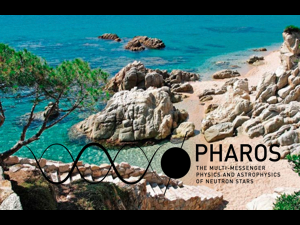Speaker
Dr
Paolo D'Avanzo
(INAF - Osservatorio Astronomico di Brera)
Description
The spectacular detection of the first electromagnetic counterpart of a gravitational wave event detected by the LIGO/Virgo interferometers and originated by the coalescence of a double neutron star system (GW 170817) marked the dawn of a new era for astronomy. The (weak) short GRB 170817A associated to the GW event provided the long-sought evidence that at least a fraction of short GRBs are originated by NS-NS merging and suggested the intriguing possibility that relativistic jets can be launched in the process of a NS-NS merger. A world-wide extensive observing campaign was launched across the electromagnetic spectrum leading to the rapid discovery of a bright UV/optical/NIR transient in the galaxy NGC 4993 (at ~40 Mpc). The wealth of data collected provided the first compelling observational evidence for the existence of “kilonovae”, i.e. the emission due to radioactive decay of heavy nuclei produced through rapid neutron capture. A faint X-ray and radio counterpart was detected only at relatively late-times, suggesting for the possibility of off-axis GRB afterglow emission. The extensive follow-up campaign carried out at all wavelengths over almost a year probed the GRB emission geometry, providing clear evidence for a successful jet endowed with an angular energy profile, featuring a narrow and energetic core surrounded by a slower, less energetic layer/sheath/cocoon.
In this talk I will present a review of the steps that led to this epochal achievement and discuss the results, implications and future perspectives of electro-magnetic follow-up of GW events.
Primary author
Dr
Paolo D'Avanzo
(INAF - Osservatorio Astronomico di Brera)

